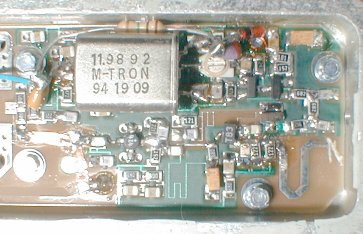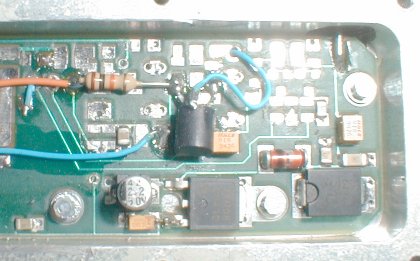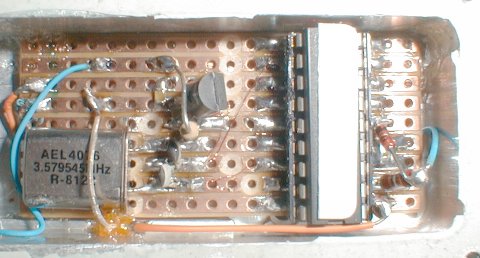
Gardiner LO2398 as a self contained personal beacon
Prompted by needing a low level signal for evaluating local short length paths. I decided to try FSK modulation on the LO on the LO2398. Finding a place to get sufficient response is easy - not overdoing it is something else.
Lower leg of the crystal is the connection point for a 1pf disc ceramic capacitor. This allows a varicap to be loosely coupled. A reverse biased 1N4148 diode was used, as this has all the varicap action required to swing the crystal a few hertz (x200 in the PLL remember) A 1 meg resistor from the diode/cap junction, decoupled at the other end of the resistor by a 10n capacitor, then take +8v to this via a 10K resistor. Where the 10K resistor meets the 10n and 1meg resistor is your FSK input point. Keying this to ground or floating to effect FSK with a narrowish (almost RTTY) shift.

Fig.1 The 'Varicap' Modification

Fig.2 The BC547 Keying Transistor
Then a keying switch (8V is not TTL compatible) using a BC547 transistor with collector wired to the fsk point, and emitter to ground. A PIC 16C84 keys this, and the software provides a beacon keyer (very basic - but all that's required) to generate an identifiable fsk signal. Note for US readers, the BC547 is a general purpose NPN switching transistor.

Fig.3 PIC16C84 Based beacon keyer to the author's design.
It's unbelievable just how far 25mW will travel.
Adding a small RF amplifier (and there's plenty of candidates inexpensively available) would up the output to a quite healthy level. Apparently the MAV-11's removed during modification can be pressed into service with a little care.
Code for the PIC16C84 keyer is available on request.
Back to the 13cm Microwave Radio Page